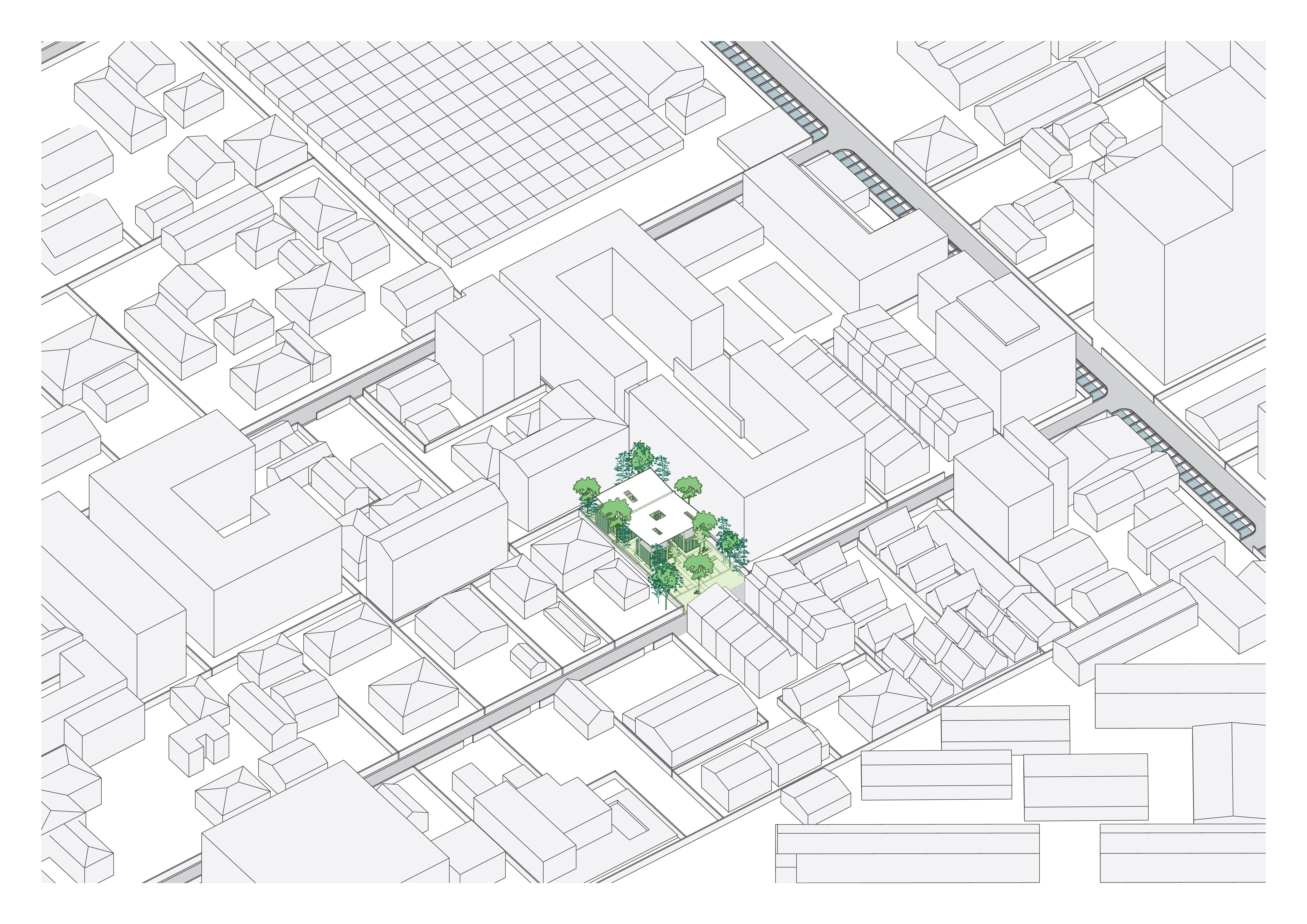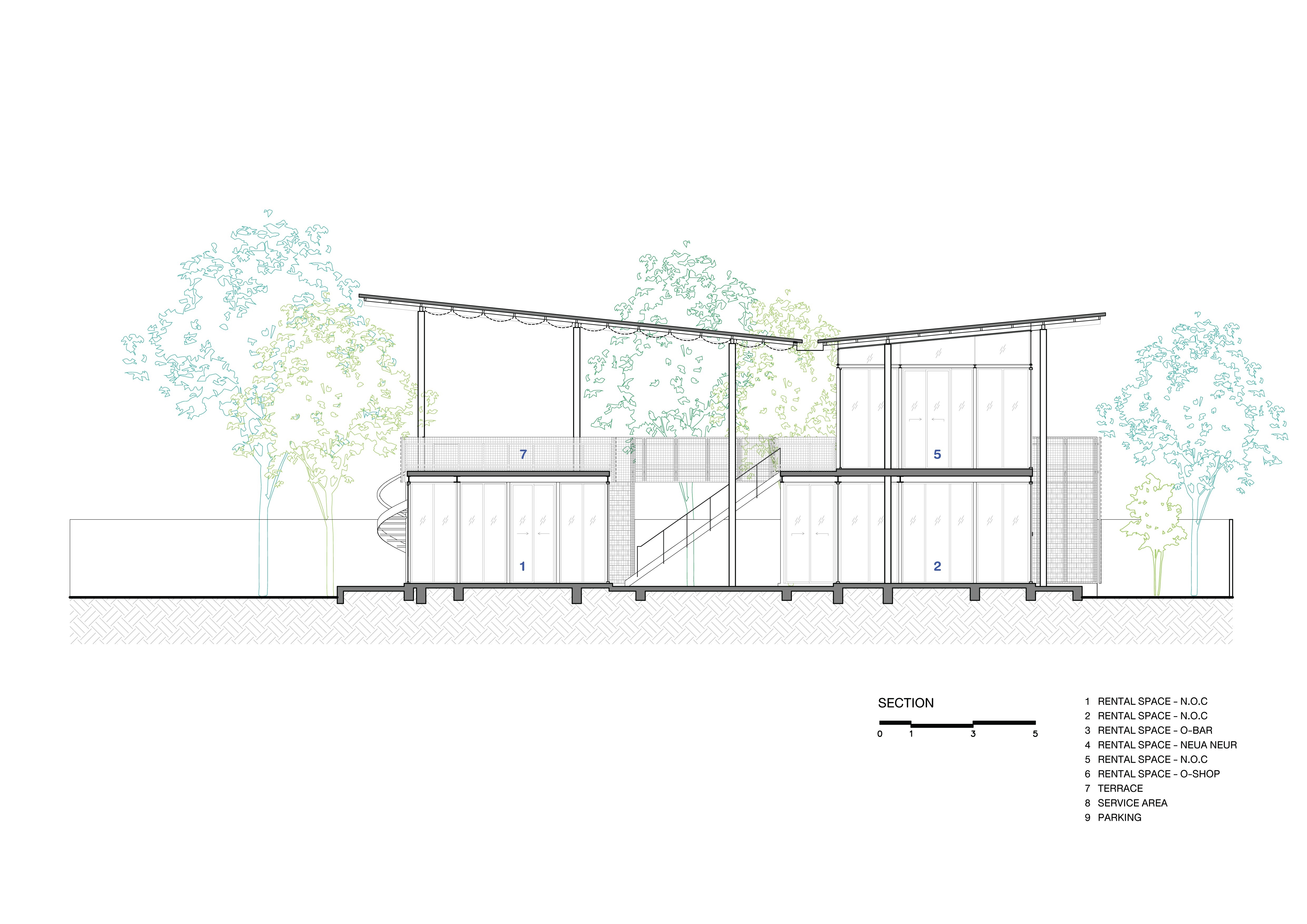POWWOWWOW
Bangkok has 6.9 sq.m. of green public space per capita, 2.1 sq.m. below WHO standard. Most of the public parks are big and inaccessible due to the usual heavy traffic. Small pocket parks in the neighbourhood will be more efficient for the city. Because of the past relaxed property taxes, the city holds many empty lands in the prime area. In 2020, the new taxes system encourages the empty sites to be utilised commercially. The project takes the vacant land and aims to be a model for a small sustainable urban living funded by the benefits from wide range of commercial activities serving the neighbourhood in a walking distance. Daily local food stalls, cafe, weekend markets, urban farming draws people together and creates a sense of community which presently does not exist in the high-rise development of the area. The fluid commercials activities targeting different groups of income to will help to guarantee its financial feasibility.
The building sets out as a pavilion in the garden, the basic typology of tropical living, a big roof without walls. By taking advantages from the naturally grown vegetations of the existing, the roof is laid on the site in relation to every found trees to maintain the green oasis condition. The activities with controlled environment are kept minimum and divided into five small boxes under the big roof. The fluid and flexible activities and circulations are placed the space with natural airs in between, in the garden. All opaque walls and fences are designed as the surface to be covered by the vines. The space under the shade in the outdoor airs surrounded by the trees is the key feature to allow people to expose themselves to fresh airs in the concrete jungle.
The landscape aims to maintain the amount of the green surface of the original site. The foot prints of the building is kept minimum to obtain the maximum permeable ground surface. The new plants introduced to the site follow the tradition of local household that most of the plants are edible herbs, vegetables and fruits. The edible plants are designed to be in new forms to combine the approach of urban farming with local traditions. They are mostly simple, found locally to keep very low maintenance. Visitors are encouraged to take home the parts of edible plants to emphasise the experience of urban farming.




















